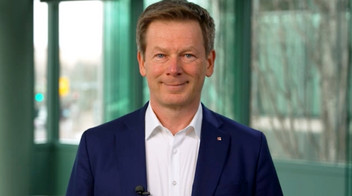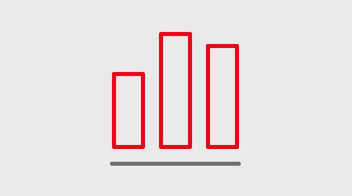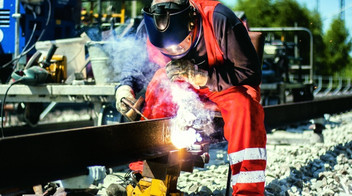Material cycle – Input resource management
Track ballast, concrete ties and rail steel form the basis for the rail network. In total, about 200 million tons of track ballast, about 95 million concrete ties and about 6.6 million tons of rail steel are used in the German rail network.
Use of materials in track infrastructure | 2023 | 2022 | Change | 2021 | |
absolute | % | ||||
Track ballast (thousand t) | 3,880 | 3,471 | +409 | +11.8 | 3,638 |
Recycling rate (%) | 12.0 | 11.4 | +0.6 | ‒ | 10.7 |
Concrete ties (thousands) | 3,475 | 2,089 | +1,386 | +66.3 | 2,590 |
Recycling rate (%) | 8.7 | 13.3 | –4.6 | ‒ | 10.4 |
Rail steel (thousand t) | 280.4 | 259.0 | +21.4 | +8.3 | 244.4 |
Recycling proportion 1) (%) | 24.9 | – | – | ‒ | ‒ |
Period: October 1 to September 30.
1) Data collection process for rail steel recycling share established in 2023.
In total material use, the number of reworked concrete ties increased to over 300,000 ties (previous year: 284,000 ties). However, the greater increase in the total quantities of procured concrete ties has reduced the share of recycled goods.
For the track network, we are taking measures to reduce the need for new materials and to keep the materials in the value chain for as long as possible. We have established a material cycle for track ballast and concrete ties:
- In 2023, 3.2 million t (previous year: 3.1 million t) of worn track ballast were removed from the track network, cleaned, sharpened or replaced. The stones are re-processed for internal use into recycled ballast or for further use as split or crushing sand for road construction. This is done either directly on-site by track-bound bed cleaning machines, mobile treatment plants or in external certified facilities. This significantly reduces the amount of new track ballast required and the associated transport-related greenhouse gas emissions. For example, as part of bed cleaning, during which the track ballast is taken, sieved, cleaned and returned to the track, 1.6 million t (previous year: 1.3 million t) of track ballast were cleaned, of which 0.8 million t (previous year: 0.6 million t) were directly returned to the track network.
- Since 2023, DB InfraGO and DB Bahnbau have been working together with HTW Dresden and facilities manufacturers to examine a new method for a milder treatment of track ballast with the target of increasing the recycling share in the track ballast.
- In 2023, about 532,000 t of unusable concrete ties were removed (previous year: about 533,000 t). The concrete ties are, where feasible, reworked for reuse in the track network. Concrete ties that are not suitable for this are recycled by certified disposal companies and used for other applications, such as road or path construction.
- In order to increase the recycled content of rail steel from about 25%, we first assessed the effectiveness of the two levers – the rail refurbishment of old rails and the procurement of green steel – as key drivers and identified the need for action, for example the expansion of reprocessing capabilities.
Our resource conservation measures are diverse:
- Among other things, we use innovative 3D printing methods for efficient and resource-efficient component production in vehicle maintenance. We avoid superfluous stock; only the material that is actually needed is used in production; and we extend the life cycle of the vehicles by printing components that are no longer available from the manufacturer. Since 2015, we have printed over 80,000 (replacement) parts in more than 500 different applications. However, even in this resource-saving process, not every printing job is immediately successful and waste is produced. We have therefore teamed up with Recycling Fabrik to develop a recycling cycle for 3D printing waste from the most commonly used printing materials for all DB sites in Germany.
- We are able to offer more and more services digitally, based on paperless communication. On our trains, for example, it is possible to read numerous magazines free of charge on the ICE portal. Since 2023, the customer magazine DB MOBIL has only been available digitally. In our travel centers, we have also reduced the quantity of printed advertising materials.
- In Zorneding (Bavaria) in December 2023, we opened the first concourse building entirely made of wood. Excess energy from the 140 m² photovoltaic system will be stored in a sustainable second-life battery storage system from the DB start-up “encore”, made up of 14 used battery modules from electric cars.


